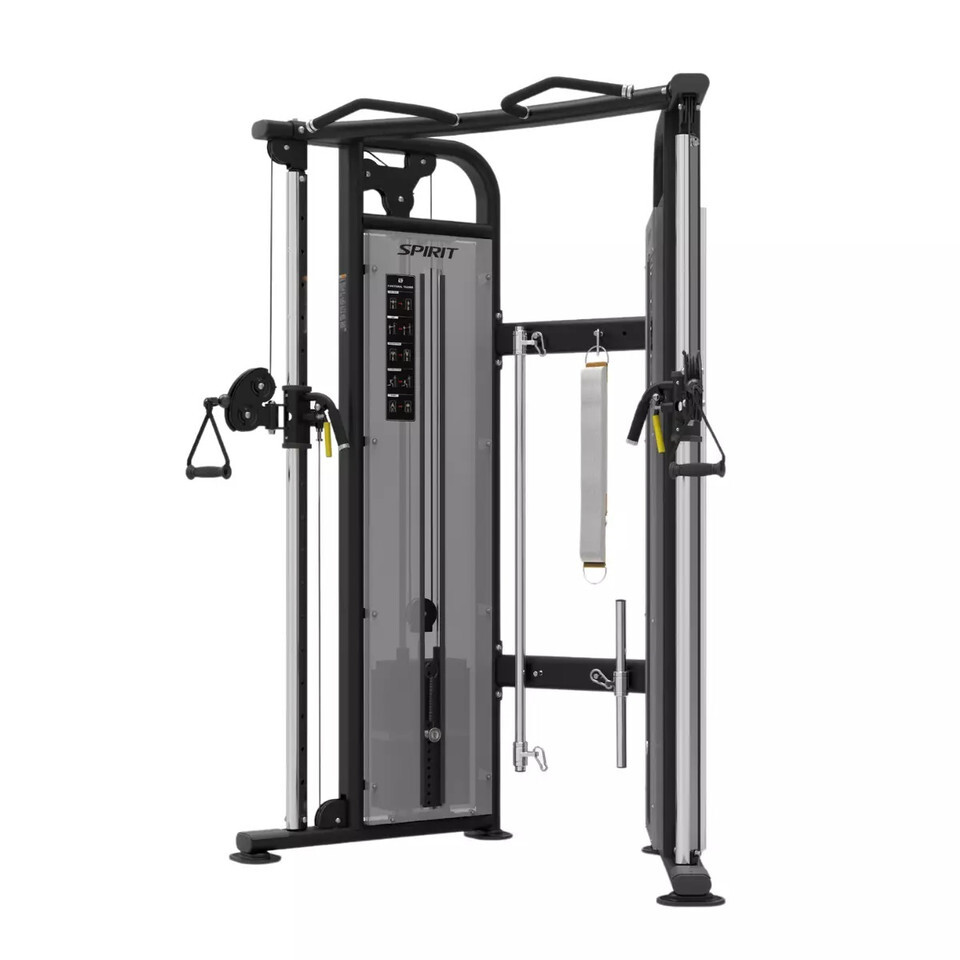Why Core Workouts Are a Must for Runners and Weight Lifters
Running and weightlifting are two of the most common and accessible types of workouts. They’re simple in structure, require minimal equipment to get started, and are proven to build a solid fitness foundation.
Running boosts endurance and cardiovascular health. Weightlifting builds strength and muscle. Together, they create a balanced, functional body. But both rely heavily on one thing — core strength.
Most people think core workouts are just for visible abs, but in reality, your core is what holds everything together. It plays a central role in stability, strength transfer, and injury prevention.
Still don’t feel like doing it? Fine, let’s give you more reasons to prioritize core strength and how to train it with purpose and not just as an afterthought.
What Counts as “Core”?
Contrary to popular belief, the core is more than abs. It's a complex network of muscles that wrap around your midsection like a natural weightlifting belt and includes:
- Rectus abdominis (your “six-pack” or “abs”)
- Obliques (sides of your torso)
- Transverse abdominis (deepest layer, stabilizes your spine)
- Erector spinae (back extensors)
- Pelvic floor, glutes, and even lats (depending on movement)
These muscles connect your upper and lower body. Together, they stabilize your spine, transfer force between upper and lower body, and protect your joints from excessive strain. In simple words, they help you move better, stay balanced, and protect your spine.
Why Runners Need a Strong Core
Now let’s get to the point.
If you’re a runner or running is the only form of workout in your routine and you still haven’t built up enough endurance, there’s likely a reason behind it that has nothing to do with your legs.
For runners, every stride is a test of balance and force distribution. Your core keeps your torso stable while your arms and legs move rhythmically. Without a strong core, your form starts to break down, especially on longer runs. This leads to wasted energy, inefficient movement, and higher chances of fatigue or injury. So if you’ve been putting all the focus on pace and mileage, but not seeing results, it’s time to shift attention to the part of your body that quietly powers it all.
A weak core in runners leads to:
- Poor posture (especially during long-distance runs)
- Energy leaks (the force that should be driving you forward dissipates in wobble and sway)
- Overuse injuries, particularly in the hips, knees, and lower back
In contrast, a stable core allows for efficient energy transfer, better breathing mechanics, and reduced fatigue. This is why professional runners devote time to planks, side bridges, and anti-rotation work, not just mile repeats.
Why Weight Lifters Need a Strong Core
Lifters often focus on heavy movements like squats and deadlifts. However, without core strength, these lifts become risky. You might feel strain in your lower back, or your form might break down under load, which might also lead to serious injury.
Whether you’re squatting, pressing, or rowing, the core is always on. Your core is your body's structural support system. It braces under the barbell, keeps your spine safe, and allows your limbs to generate maximum force.
Without a strong core, you risk:
- Lumbar strain during squats or deadlifts
- Pelvic tilt under heavy loads
- Plateaus in big lifts due to instability
Professional weightlifters often talk about “core bracing”, the intentional pressure you create in your trunk to stabilize your spine under load. But that kind of control only comes from training the core directly and consistently.
Core Exercises to Focus On
Building core strength doesn’t just benefit your workouts; it shows up in everyday things you don’t think about. How you sit, how you stand, how long you can walk without discomfort, or how your back feels after lifting groceries, all depend on your core’s strength.
Therefore, practical core exercises should also train your muscles to resist movements.
For instance, your core training should include:
- Anti-extension work: Planks and ab rollouts for stability.
- Anti-rotation work: Pallof presses and single-arm carries to control rotation.
- Anti-lateral flexion: Side planks and suitcase carries for balance, posture, and side strength.
- Controlled flexion: Weighted sit-ups and reverse crunches to build ab strength with resistance.
Train With the Right Tools
If your core workouts are uncomfortable, repetitive, or hard to stick to, the right equipment can change everything.
Floor-based ab work isn’t for everyone, especially if you’ve got posture issues, tight hips, or just want to go beyond crunches. That’s where something like the Spirit Fitness CSF-FUNT Functional Trainer can help you.
This machine isn't just for upper body or rehab-style training — it gives you enough versatility to build serious core control, especially with exercises that involve anti-rotation, cable crunches, chops, lifts, or single-arm presses.
The adjustable pulleys make setup quick, and the extended cable range allows for both full-body movement and targeted core work. You can easily throw in functional movements that challenge your core under resistance, like Pallof presses, suitcase carries (with cables), or standing anti-rotation holds.
Since the resistance is smooth and adjustable in small increments, it works for both beginners and experienced lifters looking to push further without putting pressure on the spine.

